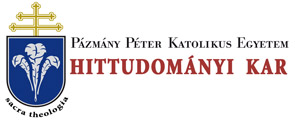Folia Theologica 21. (2010)
Barbour Hugh O.Praem.: The Cosmology of Catholic Communications: Postmodern Kerygma? A Reflection by a Disciple of SS. Albert the Great and Thomas Aquinas
THE COSMOLOGY OF CATHOLIC 153 his conversion. The sacred text which he in imitation of St Antony of Egypt consulted as a pagan would the sortes Vergilianae, revealed and brought about through the signs of human language the eternal, heavenly design of God for his salvation and sanctification, and revealed as well the manner in which this design would be accomplished in him, namely in the life of Christian asceticism: non in comesationibus et ebrietatibus non in cubilibus et inpudicitiis non in contentione et aemulatione sed induite Dominum Iesum Christum et carnis providentiam ne feceritis in concupiscentiis.4 Can we not see in this movement today, the many who come to the knowledge and love of God through the media of communications a similar continuity with the forces of nature taken up in the Divine Plan of human election to grace and glory? Let us take a look at the doctrine of St. Thomas and of St. Albert who see in the heavenly bodies both the signs and the causes of the providential ordering of all things to God, and how the use of today's media of communications might be a contemporary equivalent. This will require of us that we enter into a scientific perspective most definitely not our own, in order to glean from it what still holds true in our own time with our own use of scientific technology. The ancients understood the heavenly bodies as intelligent beings, charged by God or as gods with the movement of the universe. These bodies were either animate or the inanimate instruments of separated intelligences, or angels. There movements were signs of the specific powers of the minds which governed them, and so these movement could be interpreted in such as way that the future could be predicted in all that concerns the bodily nature of man and the lower creation subject to him. St. Thomas discusses the various opinions regarding these cosmic intelligences in his disputed question on the soul in article eight in the response to the third objection: Ad tertium dicendum quod de animatione corporum caelestium est diversa opinio et apud philosophos et apud fidei doctores. Nam apud philosophos Anaxagoras posuit intellectum agentem esse omnino immixtum et separatum, et corpora caelestia esse inanimata; unde etiam damnatus ad mortem dicitur esse propter hoc quod dixit solem esse quasi lapidem ignitum, ut Augustinus narrat in libro de Civit. Dei. Alii vero philosophi posuerunt corpora caelestia 4 Romans 13, as in the Vetus Latina version from Confessions viii.
